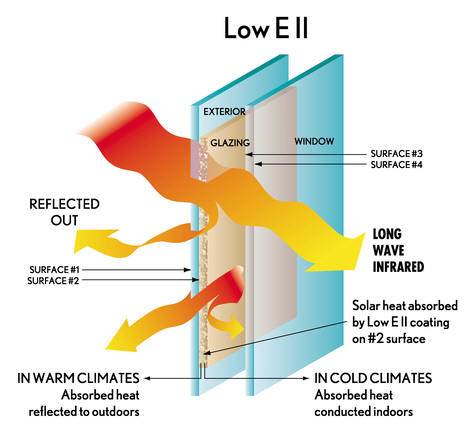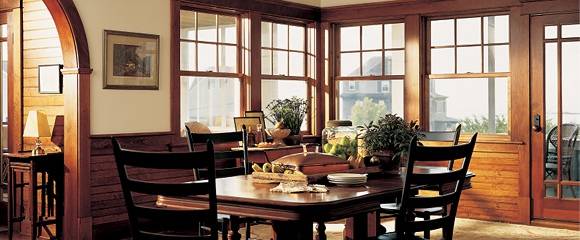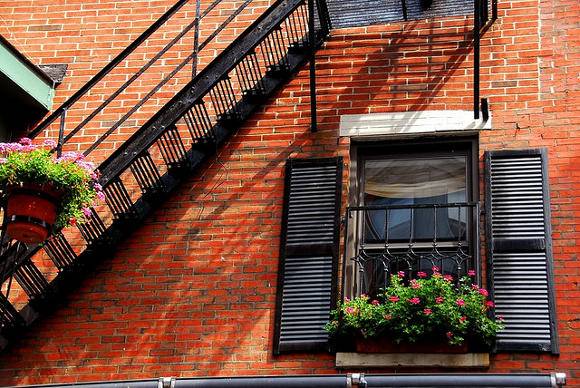Energy Efficiency & Building Fundamentals: Anatomy of Windows and Doors
If you ask ten kids to draw a picture of a house, I can almost guarantee that they’ll all include a door and at least one big window.
Ask those same kids 25 years later to describe their dream houses, and I predict they will all be crammed full of windows.
What I’m saying here is that in my experience, we all love windows.
So what’s wrong with that?
Well, suppose our goal is to create an energy-efficient building. In that case, typical glass-filled openings are a real pain in the astragal because compared to modern wall systems, they perform horribly.
In this post, I’ll explain the basics of why this is true. Read on, and I’ll also tell you what you can do about it.
Read also: Window and Door Insulation for Winter - The Best Tips
Table of Contents
Sidebar: R-value vs. U-value
Resistance to heat flow in building materials is usually quantified as R-value. The higher the R, the better the insulation. Just to confuse us, the insulation value of windows is expressed as U-value, which is the inverse of R. To find out the R-value of a window, divide 1 by its U-value. For example, U= .4; 1÷.4 = R-2.5
Heat Loss
Other than keeping rain and snow out of your bed, perhaps the most pivotal function of your house is its ability to create a different temperature inside than the temperature outside.
This is accomplished by wrapping the interior space with insulation, a generic term for a material designed to resist the flow of heat. To oversimplify for our purposes, the better this insulation cocoon functions, the less heating or cooling the building will need.
Since heating and cooling both cost money and usually involve global warming creating carbon emissions (our buildings are responsible for about 50% of our collective carbon footprint), improving insulation has been a focus of the green building movement.
In recent years, we’ve made incredible strides and now have access to insulation systems that can produce walls systems with R-values (see sidebar) in the 20’s, 30’s, and even 40’s. However, typical new windows have R-values of only 2 or 3, 10 or more times worse than the wall itself. This is almost equivalent to a thermal hole in the wall.
Therefore, the main performance flop for windows is their inadequate resistance to the flow of heat.
Mean Radiant Temperature
Mean radiant temperature is basically the average temperature of the surfaces of everything in the vicinity of your body. In a house, that means the surface of windows, walls, furniture, dusty knickknacks, and everything else.
All of these surfaces radiate heat outward toward your skin, and your skin, in turn, radiates toward them. Since windows are so bad at slowing heat movement, their surface temperature will tend to be very different from that of other surfaces in your house.
If the surface temperature of an object near you is considerably less or more than that of your body, you feel it as cold or warmth. This is why on a cold winter day, the thermostat can read 70◦F and you’ll still feel cold standing by a window. Low surface temperature, then, is another way windows drag down the overall thermal performance of our wall system.
Air Leakage
Doors and operable windows are basically huge holes that can be opened and closed. By definition, though, that closure is never perfect. The hole always leaks.
Gaps and cracks in our wall will allow air to bypass insulation resulting in the movement of heat in or out of our building. Therefore, another strike against windows and doors is their contribution to this air leakage.
Solar Heat Gain
Responsible energy-efficient designs incorporate a basically infinite, free source of energy: the sun. In our climate, this means letting the sun in during the winter.
We need glass-filled openings to accomplish this. Different glass types and configurations let in more or less of the sunlight that hits them.
This is quantified as a number called the solar heat gain coefficient (SHGC), which is basically the percentage of potential solar heat that glass lets into the building. For example, a SHCG of .5 means that 50% of the potential solar heat is making it through the glass.
There are situations where we want solar heat gain and others where we don’t, so the wrong glass type in the wrong place can be a major detriment to building performance.
Conclusion
The point I’m making here is that windows and doors are typically VERY weak spots in the performance of a modern building. Next month, I’ll give you the skinny on how to choose the right windows and doors for new construction and remodeling or how to spiff up the performance of your existing underachieving glass units.
What you can do about it
In the first half of this post I ragged on windows and doors, pointing out that they are generally a very weak spot in the performance of a modern, environmentally conscious building.
To summarize: they don’t insulate very well, are a source of air leakage, can cause perceived discomfort, and can either let in too much solar heat when it’s not wanted or block too much solar heat when it is wanted.
So the obvious question is, “What can we do about it?”
Luckily, many brilliant people have been working on window technology in recent years, and they are making big strides. So if you are looking to build a new house, there are good choices to be made to improve the energy efficiency of your doors and windows. Similarly, if you want to increase the performance of your existing house, replacing windows and doors is a good place to start.
If you want to understand the mechanics, there’s a lot to learn. For example, most windows have two glass panes separated by a space filled with air or another gas, but triple pane windows with much lower U-values (see sidebar) are becoming more common. Then there’s the issue of Low-E coatings, basically coatings that increase efficiency by reflecting heat energy. Windows can have different numbers and types of coatings configured to reflect heat in or out. Frame type is also important with choices ranging from metal to vinyl to wood to fiberglass. Glazing spacers, thermally broken frames, gas fills, closure mechanisms…the list goes on.
You don’t need to worry about most of that stuff because all of this technology is synopsized in three quantifiable performance characteristics: U-value, solar heat gain coefficient, and air leakage rate. The National Fenestration Rating Council has created a standardized rating system requiring computer modeling and lab testing to verify these variables. The results of these tests are prominently displayed on a label you’ll find on any new window or door. If it’s not labeled, don’t buy it. If you are talking with any professional, be sure to reference these numbers and clarify that you want values for the whole window or door unit, not just the glass. Armed with this basic knowledge, I can now offer you some simple rules of thumb summarized in the following chart:
| Wind or Door Facing | U-value (BTU/hr-sf-◦F) | SHGC | Air Leakage (CFM/sf) | |||
Good* | Best | Good* | Best | Good* | Best | |
| East, West, North1 | .3 | .15 | .4 | .25 | .3 | .01 |
| South2 | .35 | .15 | .5 | .6 | .3 | .01 |
* My advice is for you not to go below these performance ratings
1 East, west, and north-facing openings. In terms of winter solar heat gain, these windows will be a net loss. No matter how much sunlight you can let in, the energy gained won’t be enough to offset the energy lost when the sun isn’t shining through the glass. Therefore, choose windows and doors with the lowest SHGC, U-value, and air leakage rates that you can afford.
2 South facing openings. For glass facing south and getting full sun at least between 10:00am and 2:00pm all winter, choose windows and doors with the lowest U-value and air leakage but the highest SHGC. NOTE: There is a new building code in effect setting a maximum SHGC for windows which is well below the desirable SHGC for south-facing windows that get full winter sun. There are ways around this glitch that are too involved to describe in this column. Just be sure to get this worked out with your builder and code officials before ordering windows.
As you start to shop for windows and doors, you may think that some of my chart numbers are wrong. According to NFRC specs, they aren’t. Right now, there are a huge range of performance levels and corresponding prices for windows and doors. Windows made in Europe, such as by the German manufacturer Optiwin, are the best, but they can cost more than $100/square foot. (Compare this to perhaps $15-20/SF for a decent off-the-shelf window in the US.) Canadian and US manufacturers are catching up in the performance category, so you just have to look around.
On the other hand, if you can’t afford the premium windows, there are different low-budget strategies. Covering glass openings with thick curtains anytime you aren’t in a room will increase window efficiency. If you live in an old drafty house, you can buy shrink wrap plastic to cover your single pane windows in the winter, probably for less than $20. You’ll most likely immediately experience an increase in comfort due to higher radiant surface temperature (see last month’s column) and reduced air infiltration.
Regardless of the specifics of your situation, my point is simple. If you want to reduce your heating and cooling bills, improve interior comfort, and reach carbon reduction nirvana, don’t neglect your doors and windows.




